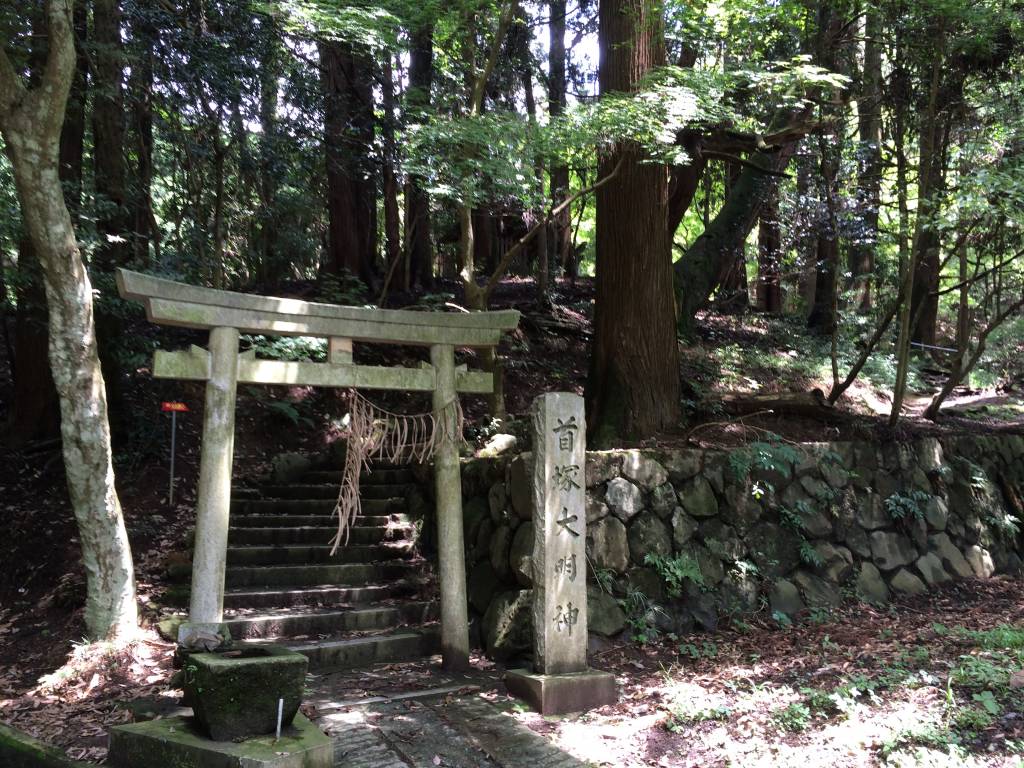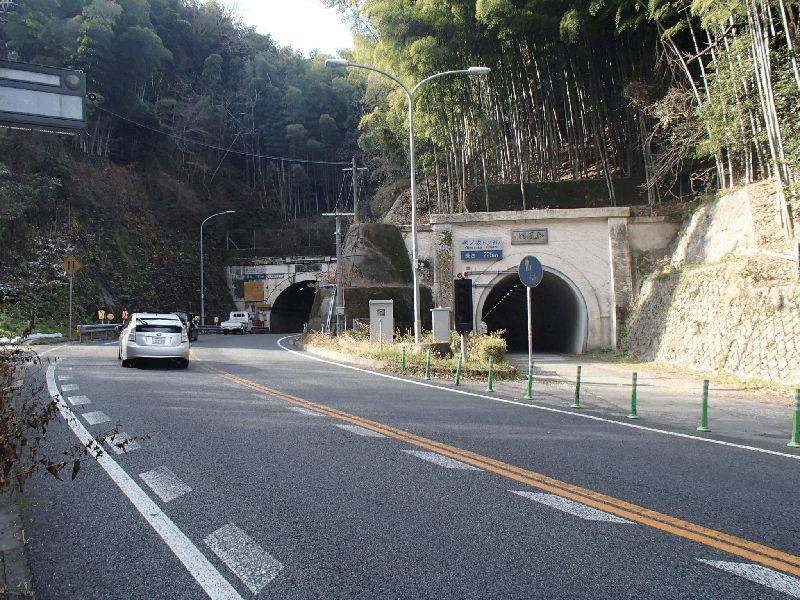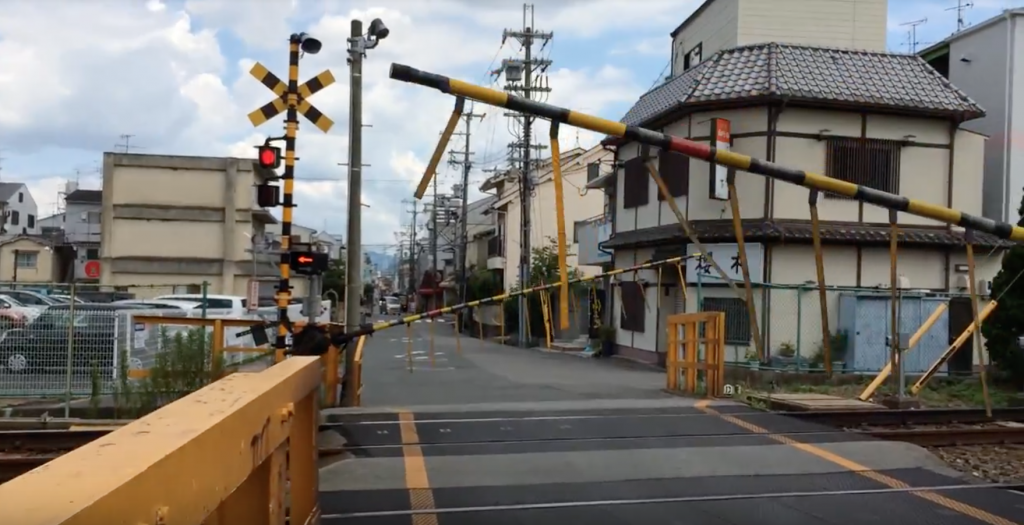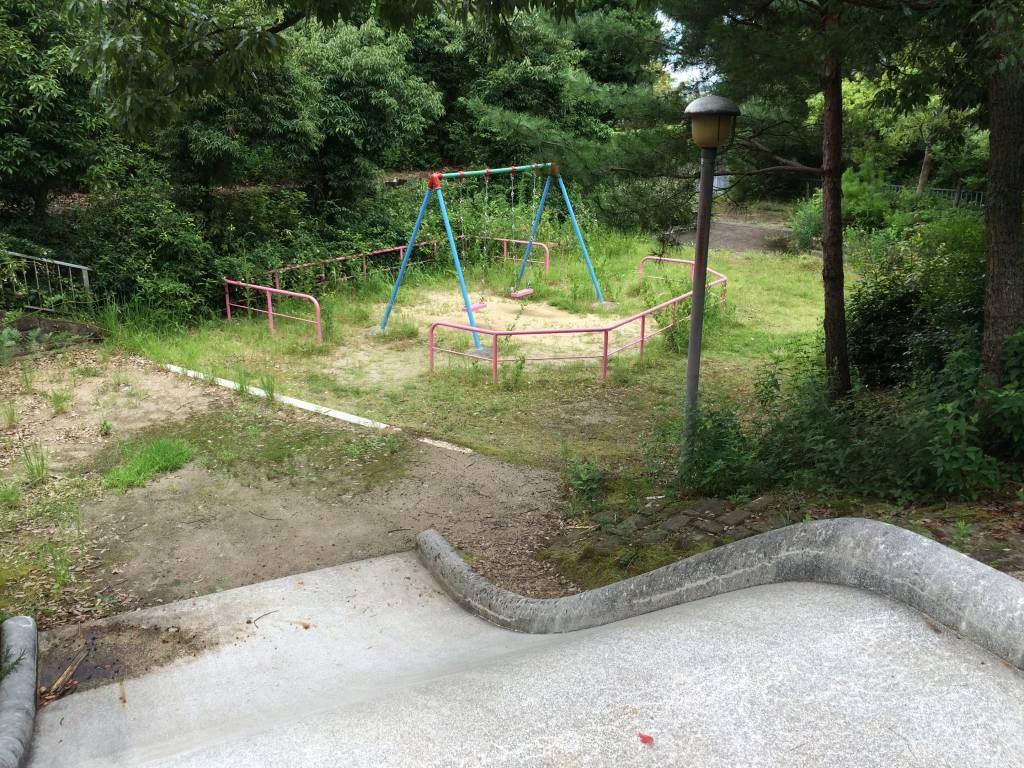You have seen only the surface of Kyoto, haven’t you?
Kyoto served as the centre of Japanese government after it was established as the capital city, called Heian Kyo. After the appearance of groups of warriors called Bushi, court nobles who governed the main part of political power, fought and piled up the corpse in Kyoto. Since Bushi took over the actual political power from the court nobles, the fire of war filled Kyoto, producing hatred all over the city. The soil of Kyoto has absorbed human blood for over thousands of years from bloody incidents such as Hogen Rebellion by Emperor Sutoku, who later became a vengeful ghost, Onin War, which all but burned Kyoto down to ashes with its war fire, and the most well-known Honno-ji Temple incident, and Ikedaya incident and Kinmon incident at the end of Edo era, including all other historically unexposed incidents. Such city with a bloody history cannot have been just a pure sightseeing city. We are going to recommend you the haunted spots where you can see and feel the cursed city, satanic Kyoto.
首塚大明神(The Kubizuka Daimyo-jin)

Address (Japanese) : 京都府京都市大枝沓掛町京都縦貫自動車道(沓掛~丹波)
Address (English) : Kyoto-Jukan Expressway (Kutsukake~Tanba), Oe Kutsukake Cho, Kyoto
Map : https://goo.gl/maps/9ufopAknDSA2
Through a National Highway 9 from the city of Kyoto to Kameoka, you will see an Oinosaka tunnel. The roads just before the entrance of tunnel definitely leads to the left, but no sign or direction to the shrine can be seen at tall. It doubtlessly looks like the shrine refuses to be worshipped. Through a rough road, there is the most horrible haunted spot in Kyoto, the Kubizuka Daimyo-jin at the end of the road. You can’t actually find anything like ground but only the lonely shrine in dim surrounded by trees.
Beside the shrine is a sainted tree, being split in two by being struck by the lightning. This is compelling. Why on earth is this certain tree struck by lightning?
The entity worshipped here is the head of the strongest ogre in Japanese mystery, called Shuten-Doji. A mysterious apparition professional hunter, Minamoto no Yorimitsu gave the Doji a toxic alcohol and beheaded. This is the very strategic victory. The legend started when this head was buried on the spot just because the head was too pure to be brought back into Kyoto. According to the story that Doji reflected on his act just before being beheaded, this shrine is said to have a divine grace on any suffering of the parts above from the neck. It seems, however, that if you duck under the gateway half-heartedly, you will be cursed. As my cold always begins with sore throat, this grace is very grateful. I tried to concentrate on praying but I was attacked by a vast swarm of mosquitoes. One further step made me regrettable. I erred in considering only about mosquitoes when ducking under the gateway. My perfunctory mind must have been read by the ogre. I will be cursed. Well, I personally think that money speaks everything. Usually, I throw only one yen coin into the offertory-box but this time, I threw 10 yen coin and left the shrine. I believe Shuten-Doji will take my tenth-fold dedication into consideration.
モーテルサンリバー(Motel Sun River)

Address (Japanese) : 京都府京都市大枝沓掛町京都縦貫自動車道(沓掛~丹波)
Address (English) : Kyoto-Jukan Expressway (Kutsukake~Tanba), Oe Kutsukake Cho, Kyoto
Map : https://goo.gl/maps/9ufopAknDSA2
(⇧ The map is the same as above since Motel Sun River is on its way to the Kubizuka Daimyo-jin.)
Turn left just before the Oinosaka tunnel in the outskirt of the national Highway, then go through the bush of cedars, unexpectedly dim in summer, and you will see the ruins on the right-hand side. This is the Motel Sun River, which is also called as Oinosaka Pass ruined motel.
Here at the motel, paranormal phenomena, such as a ghost of a woman who was murdered here looking out from the window of the second floor, lost souls crying and sobbing, and the like. The ruin has a stereotypical graffiti on its wall just as the other abandoned places would have. I can see the track of someone sneaking in by breaking the fence on a dare to try his bravery. It looks quite dilapidated inside. I see, it feels more gruesome after hearing that this was the murder scene. I would dare to go inside even in midday. I do respect my own safety. My long experience of adventurous ruin tour, warns me that the floor will, doubtlessly, fall through. Moreover, I will definitely get stung by insect. I really do take good care of myself. I decided just to pass there. Nothing should be more important than good health.
老ノ坂バス停(Oinosaka Bus Stop)

Address (Japanese) : 京都府亀岡市篠町王子田ノ尻山陰道
Address (English) : Tanojiri Sanindo, Shinochoouji, Kameoka-shi, Kyoto
Map : https://goo.gl/maps/cPqHwoVk1H92
Oenosaka (which is now corrupted as Oinosaka) was one of the four area that defended Heian Kyo on every four directions from impurity coming in from the outside of Heian Kyo. As a result, a plague or ghosts which was being shut out of the city by Ying and Yang, came to gather around this Ying and Yang barrier protecting Kyoto. This, however, is not story of olden days. Due to a large number of fatal accidents around Oinosaka, a car accidents-prone warning has been issued. Do you think this is a coincidence? No, you know who did this.
This underlying history of Kyoto has, whether or not, led the cemetery to be established in Oinosaka. There is a bus stop on the side of the road for visitors to cemetery. Now you see, here is where they appear. Lost souls waiting for the bus. They get on the bus trying to break through the barrier into Kyoto. When you see someone at this bus stop late at night, you should never meet the eye with him.
The bus just passed me, and I saw a girl in sailor uniform in its seat. “How cute!” I thought, and I followed my instinct to chase the bus. Am I actually called by ‘those’? The bus stopped at in front of the cemetery, and I passed the bus to try and see the girl’s face, but actually, she had got off the bus at the mountain pass already. I did want to see into her eyes. I really wanted to drive with her on my side.
清滝トンネル(Kiyotaki Tunnel)
Address (Japanese) : 京都府京都市嵯峨鳥居本深谷町府道137号線
Address (English) : Route 137, Fukayamachi, Sagatoriimoto, Kyoto
Map : https://goo.gl/maps/6TRScMG4C2o
The most famous gruesome haunted spot in Kyoto, horrible enough to silence a crying kid. A deep darkness is awaiting you as soon as you walk all the way in front the Adashino temple up to the mountain pass. A black hole in the mountain view, is the very entry for the Kiyotaki Tunnel. The traffic signal in front of the tunnel. This was set on one side of the traffic lane, but please be cautious. This is said to be what leads you. What is more worse, this is the place full of rumours like, a woman will fall onto the bonnet, the length of the tunnel looks different on your way back from forward, cries and screaming of a woman can be heard and the like.
Over the tunnel, is the bypass to go over the mountain pass but this is a one-way lane on Kiyotaki district. There is one more haunted spot, the overpass above the Arashiyama Takao Parkway near the mountain pass. On the side of this road, is a mirror looking downward. It’s said that a person will die if he is not shown in the mirror while passing beneath it. Although this road is one-way, why on earth is the mirror showing another side needed? This mountain pass is named as “Kokoromi Toge (A challenging mountain pass)”, and I wonder what it is actually trying. Extremely incomprehensible.
What I found when passing through this tunnel, was its unusual narrowness. Just because the abandoned Atagosan Railway was reutilized as this tunnel, the narrowness and the lowness of its ceiling gives a heavy pressure. And it’s bleak. I can see how it’s called a haunted spot. Whenever it’s in the midday or midnight, this tunnel exploits the fear out of us. Fearfully passed the tunnel, I went to see the mirror looking down at the Kokoromi Toge. This mirror does reflect the ground, which is the very spine-chilling sight. Mysteriousness turns to eeriness. Well, I could see myself in the mirror fortunately.
Now, I warn all of you who must have thought of visiting there after reading this article. Never, ever walk through this tunnel. It’s not that you will have to gentlemanly catch a lady falling. You will, to be sure, be ran over by a bus. There is a room that only one bus can afford to go through. If you are going by car, please watch out for local people who walk in the tunnel, paying no attention to traffic, and make sure you will not turn into a murderer. Or, if you are going by motorbike, do not park your bike wrongly on the slope. You will not be able to turn your bike up if you fall over at the steep slope. Drive safely. No souvenirs except your safe is wanted, daddy.
梅ノ木踏切(Umenoki Railway Crossing)

Address (Japanese) : 京都府向日市寺戸町二枚田4
Address (English) : 4 Nimaida, Terado Cho, Muko-shi, Kyoto
Map : https://goo.gl/maps/KMD9d8wrNtQ2
A railway crossing in the complicated residential area. Hankyu railway line crossed the Muko city. My visit to the site gave me the clear reason why this was a mecca for suicide committers. Here at the crossing, distance between train and pedestrians is quite close.
This place is not only filled with suicide but also deaths from traffic accidents. This place is ranked 2nd and 3rd highest for motor vehicle traffic accident fatalities in post-war Kyoto. The 1st took place in Gion. Now, the 2nd was the collision between the bus and the train at the Umenoki Railway Crossing on 5th of November in 1961 which caused in 7 deaths, followed by the 3rd, 5 deaths from the collision between the car and the train at this crossing on 23rd of February in 1970. 12 lives were lost by traffic accident at this crossing. It’s strange that a series of accidents occurred at the same railway crossing and placed themselves at higher ranks in the traffic accidents record in Kyoto. Passing the crossing, I found flowers laid on the grass there. It indicates that there are always people losing their lives here but not reported on the news at all. You should not visit here for fun. Big fans of railway or Hankyu, watch out, for the distance between you and train is so close that you can easily touch it.
天蓋の花公園(Tengai no Hana Park)

Address (Japanese) : 京都府京都市大枝北沓掛町4丁目7
Address (English) : 7, 4 Chome, Oe Kita Kutsukake Cho, Kyoto
Map : https://goo.gl/maps/p9kLAEzcNxG2
A very quiet park surrounded by leafy residences. Down the steps, is the square with the slide in the swing. This is a park on the slope. What has made this place “a haunted spot”? No particular incidents or accidents have been heard of. One walk round the park could give you the clue, which is its bleak and dreary atmosphere. What with cicada chirping, and with the dusk coming, this place is suddenly bathed in spooky atmosphere, where a mysterious apparition would appear, whispering “you have called me, mister?”
化野念仏寺(Adashino Nenbutsu-ji Temple)
Address (Japanese) : 〒616-8436 京都府京都市右京区嵯峨鳥居本化野町17
Address (English) : 17 Adashino Cho, Sagatoriimoto, Ukyo-ku, Kyoto
Map : https://goo.gl/maps/bjSxy3A7Tq42
Remember that in Kyoto, any place with “~no” in its name is a burial ground, the place for the end of man’s life, especially the life of those who are low in hierarchy, or obscure. Adashino Nenbutsu-ji Temple as well as Toribeno in Higashiyama, Rendaino in Rakuhoku, is known as the ground for disposing dead in the way of exposing it to the elements. Nenbutsu-ji Temple is said to be found by Kukai who buried dead bodies that were disrespectfully abandoned. A huge number of stone monuments and Buddhist statuettes for neglected lost souls were all gathered in Meiji era. Over 8000 of Buddhist statuettes are named “Sai no Kawara (Riverbank of Sai)” after “Sai no Kawara (Riverbank of hell)” at where ogres destroy the stone pyramid when the dead souls nearly completed piling up the stones. Now, this sounds to be a paranormal factor, but actually psychic photos are often taken (this is the very reason for No Photography on the spot) and visitors feel sick upon their visits.
It was on the day of “Sento Kuyo (Thousand Lantern Festival)” that I visited Nenbutsu-ji Temple. This is the festival held on the 23rd and 24th of August every year in order to memorialize thousands of statuettes for neglected lost souls in Sai with thousands of lantern lights. The scenery of the statuettes covered in dusk and lit by thousands of lanterns, is nothing but fantastic. Please keep in mind that photography is permitted from outside Sai but use of tripod is prohibited. Do visit Nenbutsu-ji Temple on festival day if you could make it, and please hold a memorial service.
清水寺(Kiyomizu-dera Temple)
Address (Japanese) : 〒605-0862 京都府京都市東山区清水1丁目294
Address (English) : 294, 1 Chome, Kiyomizu, Higashiyama-ku, Kyoto
Map : https://goo.gl/maps/n2WfUxqw3dT2
This is such a famous sightseeing spot in Kyoto that I don’t need any introduction. However, no guidebooks introduce here as the haunted spot. It’s hard to believe, but the true meaning of the saying “jumping off the stage of Kiyomizu” (this is often used as an idiom when someone wants to say he is going to do something with his life), is to become an all but corpse. This is built in the best construction pattern for the dead corpse, after falling off the cliff and rolling down the slope, to be pecked by birds and weather, and return to the nature. The building is jutted out from the cliff and supports this stage on its pillar of a long and big zelkova. This Is called Kakezukuri architecture. It’s partly told that the high height of the ground was designed to prevent its terrible stink from and infection by the decomposing dead thrown out down the cliff. I personally recommend you to drive from around Ooya Honcho located in south of this Kiyomizu-dera Temple, through Shougun-duka to Yamashina.
From Higashiyama to Yamashina, there is an eerie atmosphere that I can’t explain. This district where a crematory still remains at, used to be a place for disposal of the dead by exposure to the elements or exposure to birds. The name of this place, Toribeno was said to be derived from this custom to hang the dead and let birds to peck at it but, I wonder if it was named after the meaning of the dead flying in the sky just like birds. Up in the sky, there are a tremendous crowd of birds flying and staring at us, that will flock around the dead body once it’s abandoned. What would imagine? I recalled the horror-thriller film by a great film director, Alfred Hitchcock, “The Birds.” I’ve heard that he actually got an idea of this film when he came to Kiyomizu-dera Temple in Toribeno. Well, I just made this up though.
三条河原(Sanjo Gawara)
Map : https://goo.gl/maps/BRyX9WPEdWS2
A flood plain that bridges south and north along Kamogawa River. From Sanjo Street to Shijo Street, is the most bustling line. A great relaxing spot for both local people and tourists, as they can enjoy having food on the riverbed, laying down there or walking around in spring and autumn, and jogging in winter. Does any man of today know that this flood plain, which provides peaceful scenes through a year, is actually a haunted place?
With a heavy flow of people, Sanjo-gawara was the best place to expose beheaded heads in the mean of punishment. The legend holds that the head of Taira no Masakado was exposed but it flied away to Kanto after 3 days. t is told that Kamogawa-River soaked in blood of the greatest thief from Azuchi-momoyama era, Ichikawa Goemon who was executed by boiling, and beheaded Toyotomi Hidetsugu, a nephew of Toyotomi Hideyoshi, and the executed Hidetsugu clan of 39. This execution place where children were mercilessly killed, is said to exist near the Sanjo Kiyamachi. On this spot, exposed is the head of Ishida Mitsunari who lost in the Battle of Sekigahara just before the Edo era, and the head of Kondo Isami who hold bloody battles in Kyoto. Ironically, Ikedaya from Ikedaya incident which made Shinsengumi famous was in Sanjo-Kiyamachi, only a few meters away from this execution place. There are more criminals executed here.
As you see, haunted Sanjo Kawara is surrounded by vengeful spirits and hatred.
Ordinary people can’t feel these grisly entities, but their existence can somehow be proved by couples at Kamogawa River. Couples who take seats by riverside in the same distance away from each other, no matter when it’s in hot summer or in penetrating cold winter. One holds that couples are actually dodging ghosts. This is startling. It means that there is a ghost between each couple. For people who can see ghost, it must look like 《 a couple, Kondo Isami, a couple, Ishikawa Goemon, a couple, Taira no Masakado, a couple…》 as if couples are watching the sensational river flow with the greatest people from olden days. Couple who sit along the Kamogawa River is said to be able to have a successful relationship. There are various theories but in my view, let’s say, people who lost their lives at Sanjo-gawara in Bakumatsu era include the party of Sabaku and that of Tobaku. These spirits can never rest in peace if their rivals float around each other after deaths. This is where couples work as the buffer. To keep themselves peaceful, ghosts in Sanjo-gawara continue to make successful couples. For this reason, I recommend you sit in Sanjo-gawara with the person you like. With the support from ghosts, you will surely be with your lover happily ever after.





No Comment